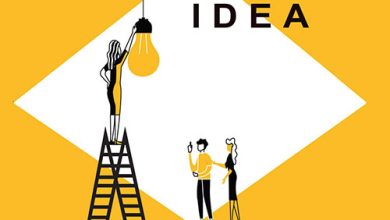EXIT STRATEGY

TRANSFORMATIVE TRANSITIONS
Merilee Kern illustrates what every company founder should know about the various exit archetypes

Business transitions enable company founders to navigate the opportunities and challenges that come with change. They often foster continued innovation and success in an evolving marketplace.
In the daunting yet exhilarating journey of entrepreneurship, founders traverse various roles that evolve with their venture. Today’s thriving US economy is providing a favourable environment for founders to move on to the next phase of their professional lives.
These transitions mark a time of great change and the unknown that lies ahead can spur tremendous stress. The key is to understand how an exit will operate so that you can navigate the situation elegantly.
“Whether you are leaving corporate America to start your own enterprise or leaving a company you’ve built from scratch to focus on the next part of your impact journey, many face the same challenges,” notes business exit strategist and coach Jerome Myers.
He adds: “While the circumstances of each person’s exit differ, most if not all can be summed up in a few specific exit scenarios that every founder in today’s economy faces.”
Understanding the quintessential exit archetypes can prove critical in helping the founder perform at his or her best.
EXIT 1 Exiting the traditional career path is the first phase of leaving a traditional corporate role or life path. It involves wrestling with questions of purpose and ambition, and requires introspection and careful planning.
This stage may feel like the biggest transition for those doing it. It’s where all that you once knew is gone, and everything feels foreign and new. This should be something you embrace rather than run away from.
EXIT 2 In the next phase, founders embody the role of ‘CEO 1.0’ or the ‘Chief Everything Officer.’ They are at the helm of their venture, crafting business plans, securing initial funding and birthing their entrepreneurial dream. This is also the beginning of their next journey, where they visualise their dreams and begin to turn them into reality.
EXIT 3 Founders then transition into a dual role of product manager-thought leader, and intertwine strategic product management and thought leadership. They refine the value proposition of the business, and engage with customers while sharing unique insights and ideas publicly. This role helps shape public opinion and adds credibility to their venture.
EXIT 4 Upon establishing their business, founders assume the ‘CEO 2.0’ role by overseeing the bigger picture, managing the team and setting the strategic direction. The presence of a solid jobs market helps attract talent and scale operations during this phase.
EXIT 5 As board chair, founders step back from daily operations to guide the company’s strategic direction, ensure its financial health and focus on stakeholder relationships. In the United States for example, the rise in personal savings recorded in the second quarter of last year provides financial flexibility for strategic growth and succession planning.
EXIT 6 The ‘Exit’ phase involves founders selling their business or stepping down from their operational role. In the current economic environment, with recession fears diminishing due to falling inflation and a robust job market, this phase can offer potentially substantial financial returns.
EXIT 7 Founders then diversify their wealth in the ‘Building Your Post-Exit Portfolio’ phase. The interest rate hike by the US Federal Reserve not long ago, which was aimed at curbing inflation, provided a favourable environment for investments in real estate, stocks, bonds or other startups.
EXIT 8 The final phase is ‘Philanthropy and Legacy.’ It provides founders with the opportunity to leave a lasting impact by contributing to causes they deeply care about. The role of philanthropy remains crucial and offers founders a chance to leverage their wealth for societal betterment.
“During each of these exits, it’s imperative to note that the founder will experience a phenomenon that will test his or her mental resilience, which is known as the ‘Founder’s Exit Paradox’,” says Myers.
This refers to the comprehensive psychological disengagement experienced by founders, which encompasses behavioural, emotional and cognitive aspects.
The exit paradox often produces similar feelings as an existential crisis where newly exited operators (NEOs) begin questioning the meaning and purpose of their life although the trigger in this instance is due to a major accomplishment.
According to Myers, when a founder or NEO experiences the exit paradox, he or she will wrestle with what he calls the ‘six centres of doubt.’ Founders at this stage of the paradox will ask questions such as the following.
SELF-IMAGE ‘Who am I, now that I’ve won the game?’; ‘What do I do without the hyper-focussed routine I’ve had for years?’; ‘Do I deserve this?’
RELATIONSHIPS ‘What are the people in my life really after?’; ‘Why don’t my family and friends understand that I need time to figure this out?’; ‘Does my marriage make sense anymore?’
WORK ‘What does work mean now that I have exited?’; ‘Were all the sacrifices I made to get here worth it?’; ‘What’s next?’
HEALTH ‘Did I give away too many years to my business?’; ‘Am I going to use all the wealth I built to earn back the health I lost?’; ‘Can I make adjustments to live with fewer health risks?’
PROSPERITY ‘I can afford it – so why should I even give it a second thought?’; ‘Why shouldn’t I enjoy the money I earned?’; ‘Who are you to advise me about money?’
SIGNIFICANCE ‘If I died today, who would carry my casket?’; ‘Who do I trust to honour my memory after I’m gone?’; ‘What’s the best way for me to use my wealth to help others and do good?
“I’ve found that most people undergoing an exit transition are seeking a deeper and more meaningful state of fulfilment,” Myers concludes.





